NCERT Solutions For Class 9 Science Chapter 4 Structure of the Atom
NCERT Solutions for Class 9 Science Chapter 4 – Structure of the Atom are essential for understanding key Chemistry concepts in the CBSE curriculum. These well-structured answers help students grasp topics like atomic models, electronic configuration, valency, isotopes, and more. Designed as per the latest syllabus, these solutions strengthen conceptual clarity and improve exam preparation. Ideal for revision and practice, they encourage logical thinking and scientific understanding, making them a valuable study tool for scoring well in Class 9 Science exams
NCERT Solutions Class 9 Science –Structure of the Atom – Exercise Images
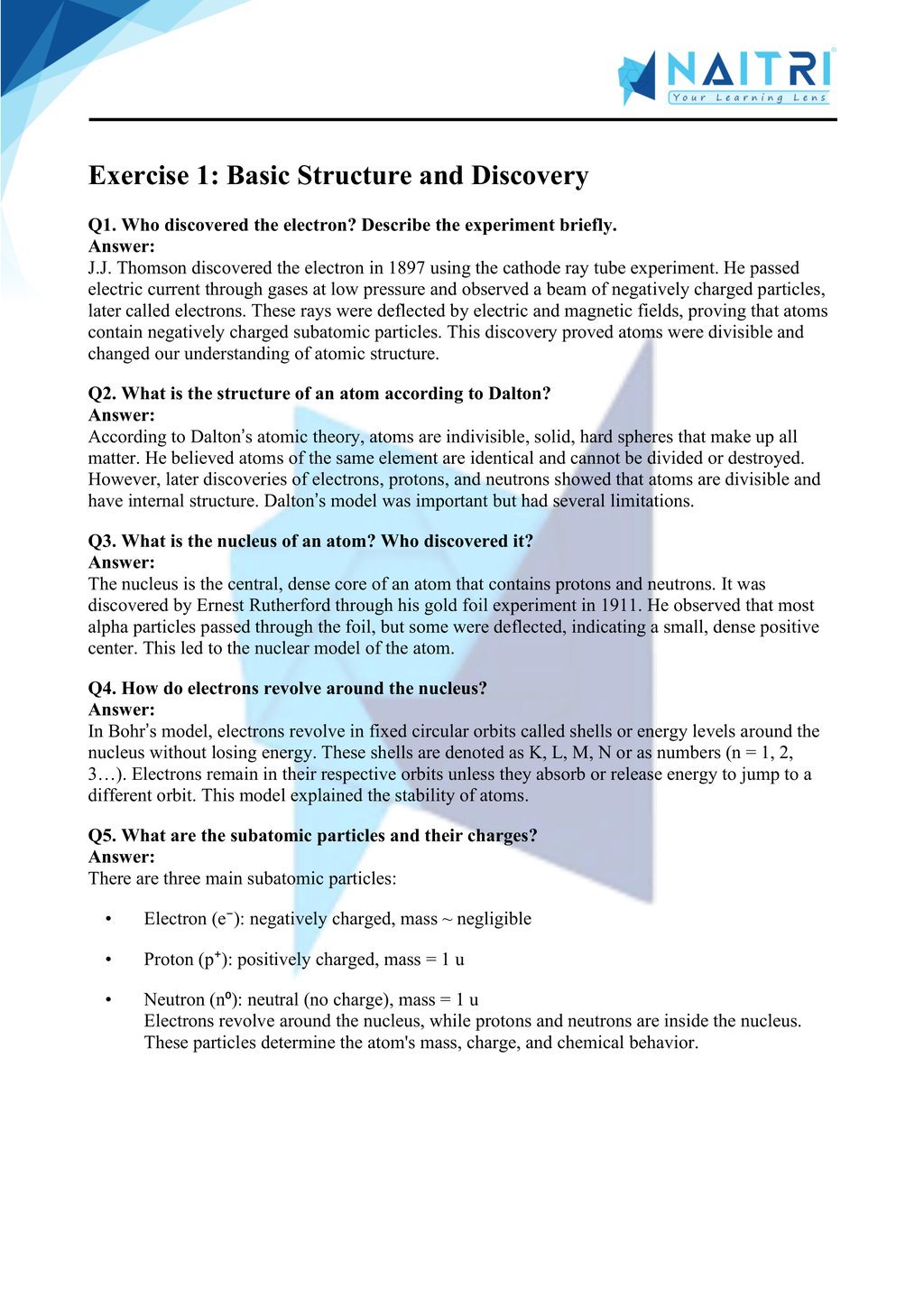
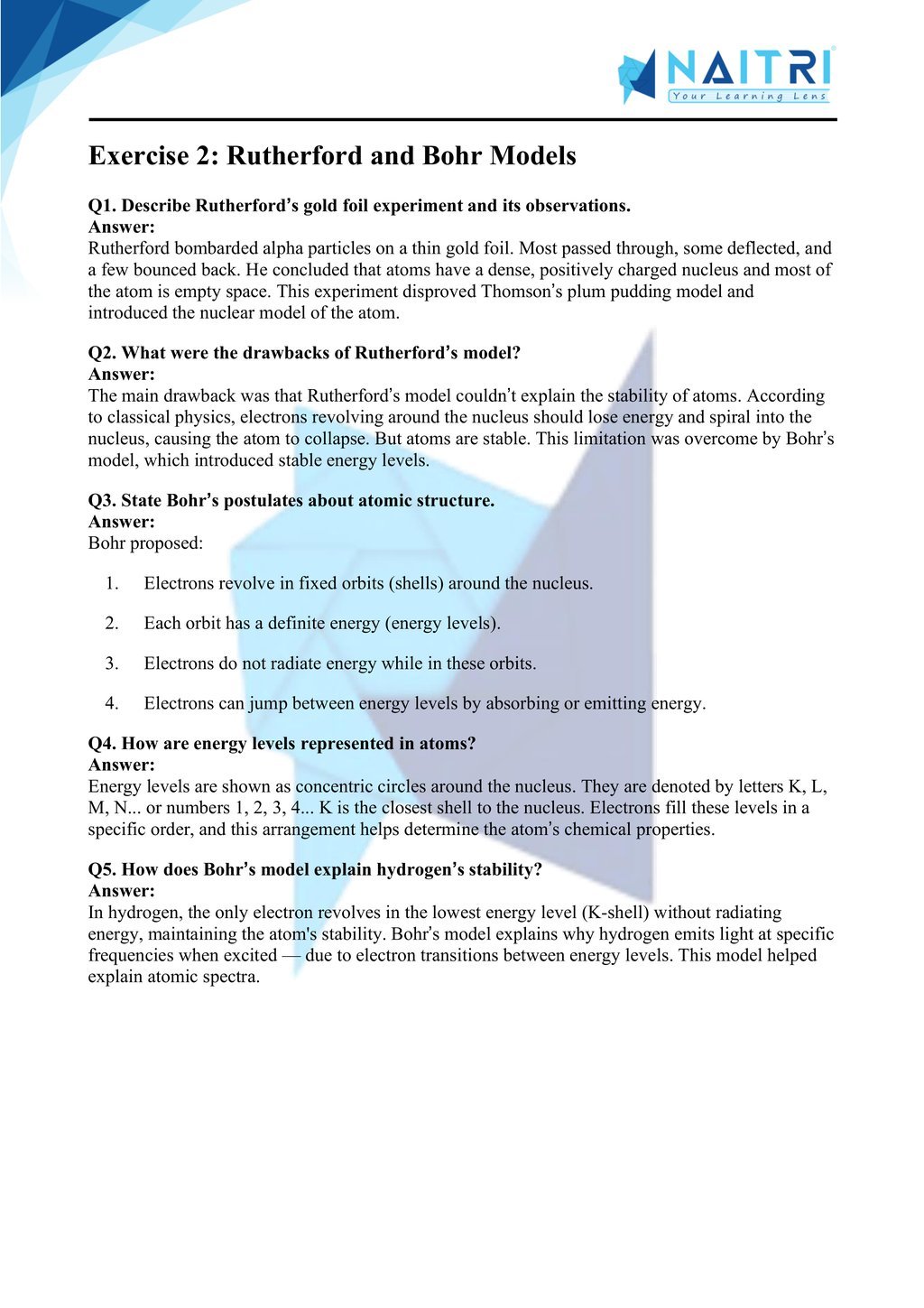
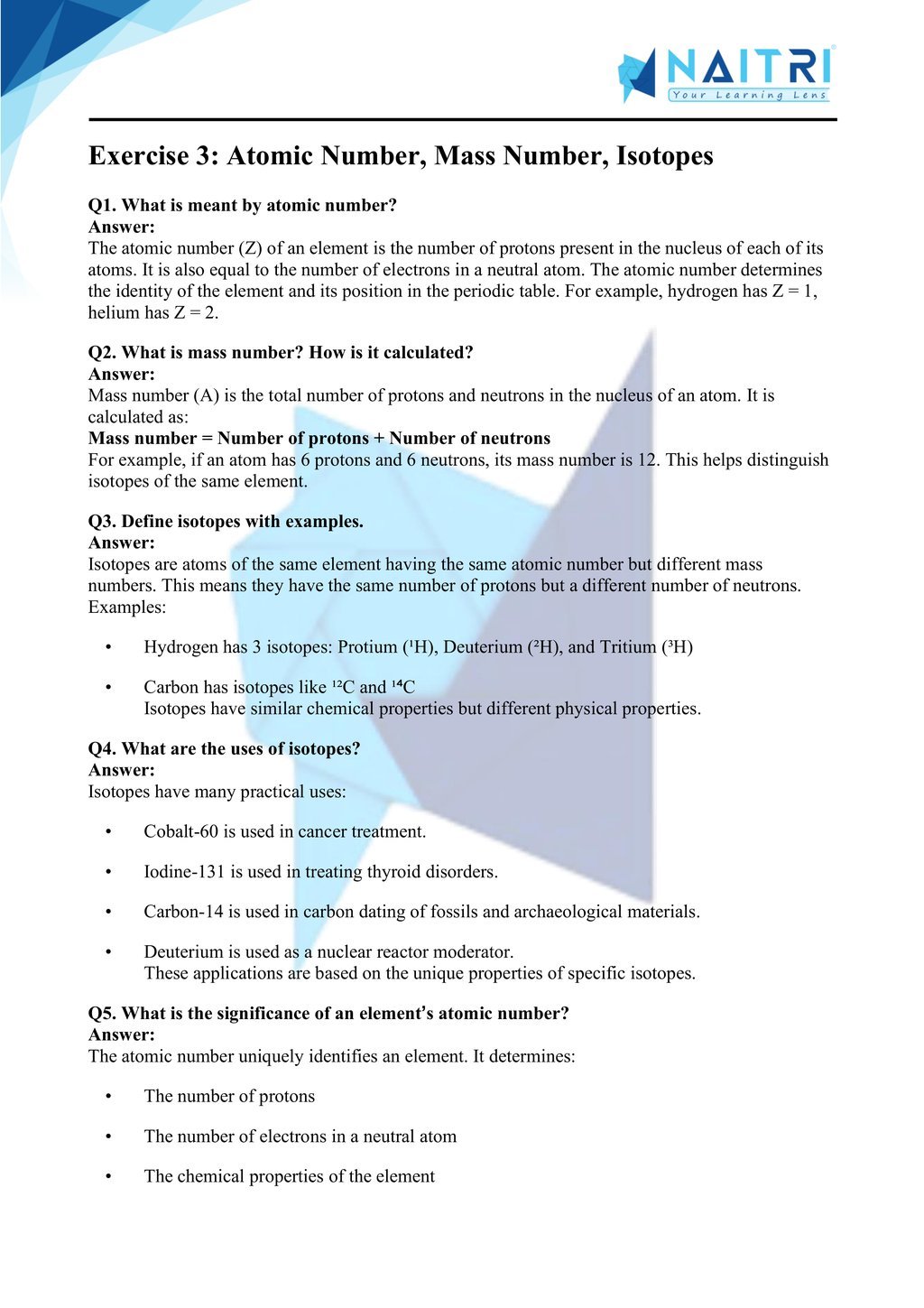
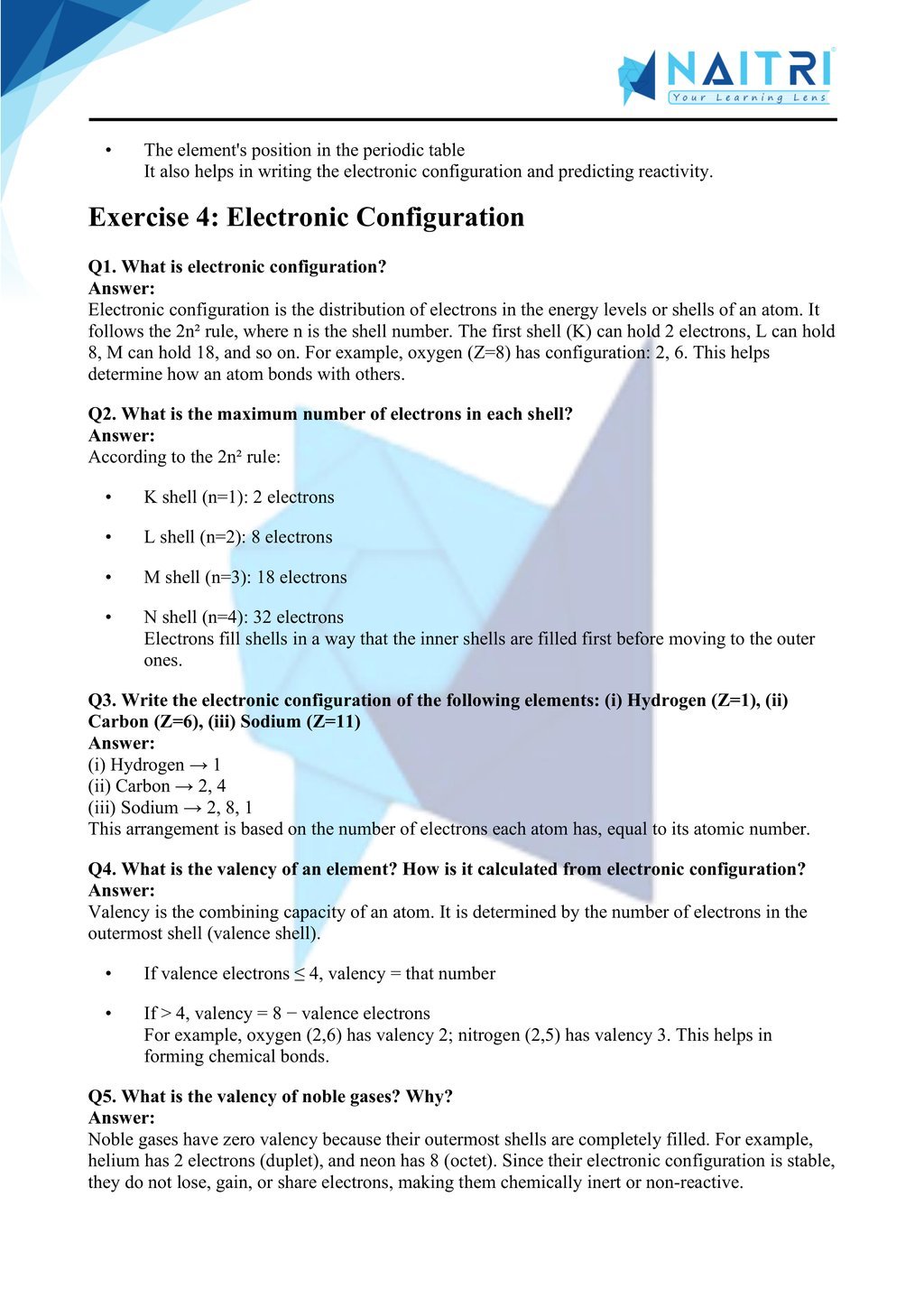
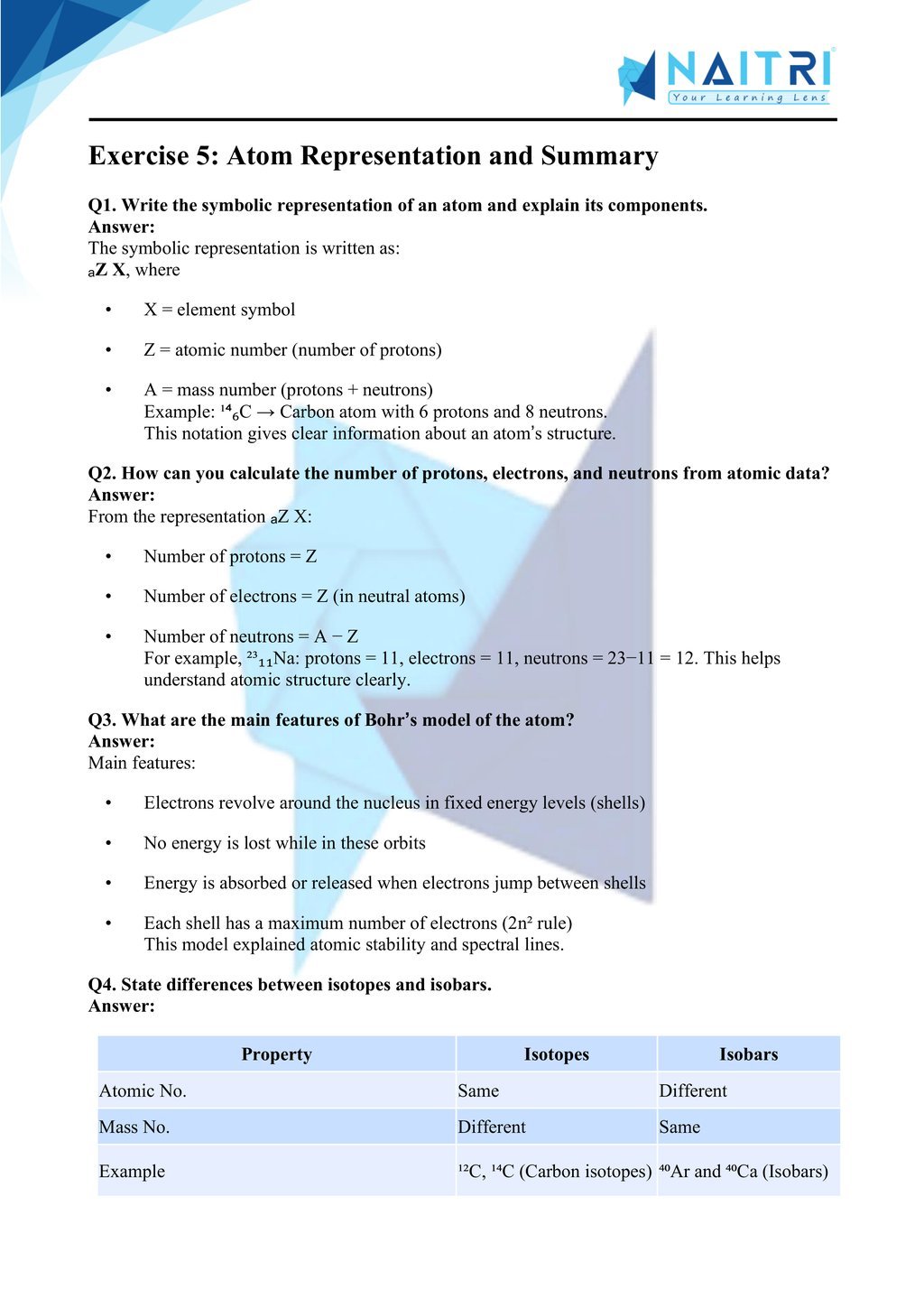
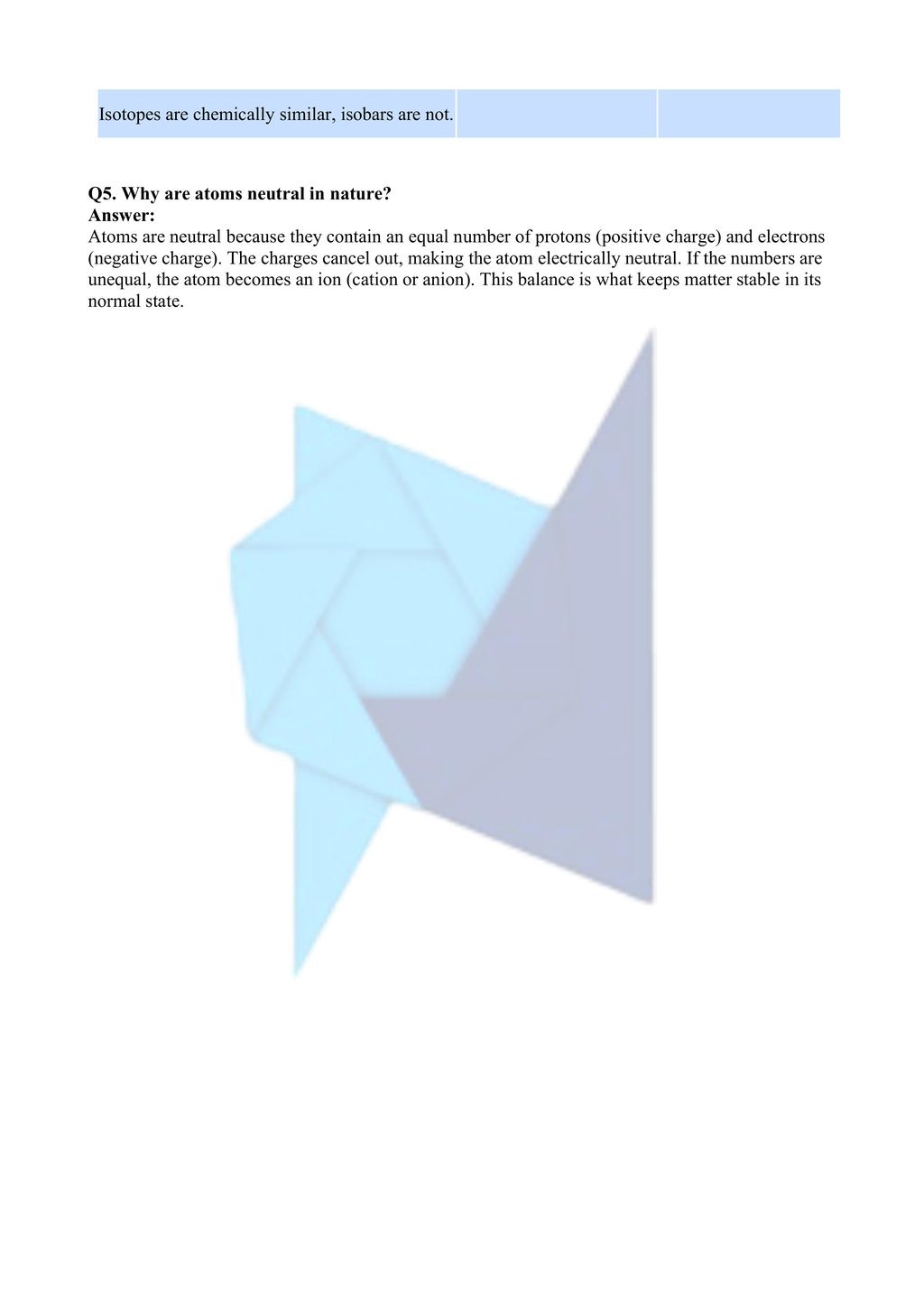
Experience Science Like Never Before – With AR!
Understanding Structure of the Atom is now more exciting and immersive! With the NAITRI App, you can explore complex science concepts through Augmented Reality (AR). Explore atomic models, orbitals spin, and subatomic particles in motion — right in front of you. Our AR-powered lessons make learning interactive, 3D, and fun, helping you retain concepts better and enjoy every topic.



Visualize . Interact . Understand . The future of learning is here
Structure of the Atom – Important Questions with Answers
1. Who discovered the electron and how?
Answer: J.J. Thomson discovered the electron using cathode ray experiments.
2. What are the three subatomic particles in an atom?
Answer: Electron, proton, and neutron.
3. Name the scientist who discovered the nucleus of an atom.
Answer: Ernest Rutherford.
4. State any two observations of Rutherford’s alpha-particle scattering experiment.
Answer:
Most alpha particles passed through the gold foil without deflection.
A few were deflected at large angles, and very few rebounded.
5. What conclusion did Rutherford draw from his experiment?
Answer:
Atom has a small, dense, positively charged nucleus.
Most of the atom is empty space.
6. What are the drawbacks of Rutherford’s model?
Answer:
It could not explain the stability of atoms.
It did not explain the atomic spectra of elements.
7. What is Bohr’s model of the atom?
Answer: Bohr suggested that electrons revolve around the nucleus in fixed energy levels called orbits or shells.
8. What are energy levels or shells?
Answer: Fixed circular paths around the nucleus where electrons revolve without losing energy.
9. Who discovered the neutron?
Answer: James Chadwick in 1932.
10. What is the charge and mass of a neutron?
Answer: Neutron has no charge (neutral) and its mass is nearly equal to that of a proton.
11. What is the atomic number of an element?
Answer: The atomic number is the number of protons present in the nucleus of an atom.
12. What is the mass number of an atom?
Answer: The mass number is the sum of protons and neutrons in the nucleus.
13. What are isotopes? Give one example.
Answer: Isotopes are atoms of the same element having the same atomic number but different mass numbers.
Example: Hydrogen – Protium (¹H), Deuterium (²H), Tritium (³H)
14. What are isobars? Give one example.
Answer: Isobars are atoms of different elements having the same mass number but different atomic numbers.
Example: Argon (⁴⁰Ar) and Calcium (⁴⁰Ca)
15. Write the distribution of electrons in a chlorine atom (atomic number 17).
Answer: K shell – 2 electrons, L shell – 8 electrons, M shell – 7 electrons
16. What is the maximum number of electrons that can be accommodated in a shell?
Answer: The maximum number is given by the formula 2n², where n is the shell number.
17. What is the valency of an element?
Answer: Valency is the number of electrons an atom needs to gain, lose, or share to become stable.
18. What is the valency of the following elements:
a) Oxygen
b) Sodium
c) Carbon
Answer:
a) 2
b) 1
c) 4
19. What is an electron configuration?
Answer: It is the arrangement of electrons in different shells around the nucleus of an atom.
20. Write the electronic configuration of the following elements:
a) Hydrogen (1)
b) Carbon (6)
c) Neon (10)
Answer:
a) 1
b) 2, 4
c) 2, 8
21. What is the importance of neutrons in the nucleus?
Answer: Neutrons add mass to the atom and help in stabilizing the nucleus by reducing repulsion between protons.
22. Give one use of isotopes in the medical field.
Answer: Isotope of iodine (I-131) is used in the treatment of goitre and thyroid disorders.
23. How does Bohr’s model explain stability of atoms?
Answer: Electrons in fixed orbits do not radiate energy, hence the atom remains stable.
24. How do atoms of different elements differ from each other?
Answer: Atoms of different elements have different atomic numbers (i.e., different numbers of protons).
25. What is meant by the nucleus of an atom?
Answer: The central, dense, and positively charged part of an atom containing protons and neutrons.
Structure of the Atom explores how atoms are structured internally, introducing protons, neutrons, and electrons. Students learn about various atomic models by scientists like J.J. Thomson, Rutherford, and Bohr. The chapter also covers atomic number, mass number, isotopes, and isobars—key concepts in understanding the identity and behavior of elements. By diving into the internal composition of atoms, this chapter builds a solid base for understanding chemical bonding and reactions in later studies.
Related Chapters You May Like
- Chapter – 1 Matter in Our Surroundings
- Chapter – 2 Is Matter Around Us Pure
- Chapter – 3 Atoms and Molecules
- Chapter – 5 The Fundamental Unit of Life
- Chapter – 6 Tissues
- Chapter – 7 Motion
- Chapter – 8 Force and Laws of Motion
- Chapter – 9 Gravitation
- Chapter – 10 Work and Energy
- Chapter – 11 Sound
- Chapter – 12 Improvement in Food Resources
Download Naitri App
Easy, Visual Learning — Right on Your Phone
Learn with Augmented Reality! The Naitri app makes CBSE and MP Board concepts interactive and fun — even in low-resource settings. Watch lessons, complete homework, take tests, and track progress — all in one place. Anytime. Anywhere.
Available on








